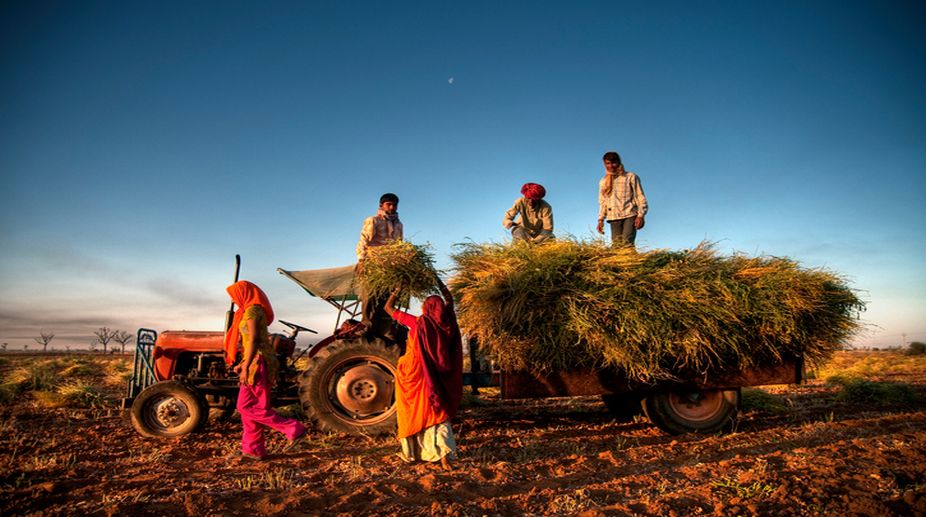PM Modi to release 19th instalment of PM-KISAN scheme at Bhagalpur, Bihar on Feb 24
Prime Minister Narendra Modi will release the 19th instalment of the PM-KISAN scheme at Bhagalpur, Bihar on Monday.

(Representational Image:GETTY IMAGES)
The central and state governments should pump in about Rs 50,000 crore ($7.5 billion) to transform half a million or one million hectares of fallow land into farmland and create the right atmosphere for private investment to rid the country of the ongoing agrarian crisis, says an eminent agricultural scientist.
“India is facing an agrarian crisis. There shouldn’t be any doubt in anybody’s mind that farmers have been protesting for any other agenda,” former Indian Council of Agriculture Research (ICAR) Director General Mangala Rai said.
Advertisement
And private investment is one of the solutions he sees to resolve the crisis.
Advertisement
“There is an urgent need of investment to create the necessary infrastructure for agriculture and to provide farmers the right price for their produce.
“Governments, both at the Centre and in the states, have to make investments and they have to create the right atmosphere to attract private investment,” he said, noting that, in the 1970s, India had 140 million hectares of arable land. In 2017, the total agriculture land has remained the same, despite a three-fold rise in population.
He said the central government should come up with a policy in the right perspective to make agriculture competitive.
“This is because those making investments will require a return on their investment. In the past, the government had tried to attract private investment in building storage capacity, but failed,” said Rai, a former president of the prestigious National Academy of Agricultural Sciences.
Known for his candid views on agriculture and the country’s farmers, Rai suggested a three-pronged approach to ensure inclusive development in a phased manner to raise farmers’ incomes and usher in fast agricultural growth.
“In India, we have 107 million hectares of degraded and barren land, which can’t be used for agriculture… Why shouldn’t the government invest or spend Rs 40,000 crore to Rs 50,000 crore to transform half a million or one million hectares of degraded land into the land suitable for farming? It will be a big asset for the country,” the 69-year-old maintained.
The second strategy should be allotment of degraded or barren land to the non-farming sector instead of providing it farmland.
He also called for a comprehensive policy to increase the irrigated land rather than adopting patchwork methods.
“Till now, despite huge funding on irrigation, it has failed to benefit farmers. During the last two plans, the net addition to irrigation was zero. Patchwork will not serve any purpose in the agricultural sector if the government is serious on high sustainable growth rate and to increase famers’ income,” Rai said.
Referring to angry peasants hitting the streets in states like Madhya Pradesh, Maharashtra, Rajasthan and Uttar Pradesh, Rai said with agriculture passing through a “crisis period” and that farmers “are not ready to sit silently”.
“After what happened in Madhya Pradesh during the farmers’ protests, it is clear they are not ready to sit silent and pray for fulfilment of their demands… The farmers’ anger lies in their expectations following the promises made to them.”
Six farmers died in clashes with the police and firing in June during the peasant protests at Mandsaur in Madhya Pradesh.
Rai said across the country, the health of the soil was fast deteriorating.
“There are nutritional imbalances and decreases in the availability of water for irrigation. Farmers have been finding it difficult to cultivate land with the cost of labour increasing. There is a lack of storage capacity.
“Three decades back, farmers used to produce 50 kg wheat by using 1 kg nitrogen, potash and phosphorus. Now farmers have been producing only 8 kg wheat by using 1 kg nitrogen, potash and phosphorus,” he added.
“What worries me is that there is no trace of price fixation. When farmers are producing more with their hard labour, they are not getting the right price for their produce. This is not a good sign for agriculture. In fact, agriculture has become unprofitable,” Rai contended.
Advertisement